Best Practices for Water in Architectural Design
Architectural visualization can often incorporate water, whether as an integral feature like a swimming pool, or as an indirect detail, such as an adjacent lake. In either case, this amazing element can help set the tone or mood of a graphic, when implemented correctly.
This article will discuss the ways in which Enscape can deliver a stunning result in real-time! Whether for a static image replete with reflections and refracted light, or a livelier video of turbulence on the water’s surface, the result is sure to please any viewer.
Water Material Settings in Revit
Revit has a built-in water material. This means things like transparency and refraction are not adjustable options, due to the material properties being based on real-world physical properties. The various built-in options are listed below.
Water Types:
• Swimming Pool
• Generic Reflecting Pool
• Generic Stream/River
• Generic Pond /Lake
• Generic Sea/Ocean
Water Colors:
• Tropical
• Algae/Green
• Murky/Brown
• Custom
Water Wave Height:
• Value between 0.0 – 5.0
Tint:
• RGB color
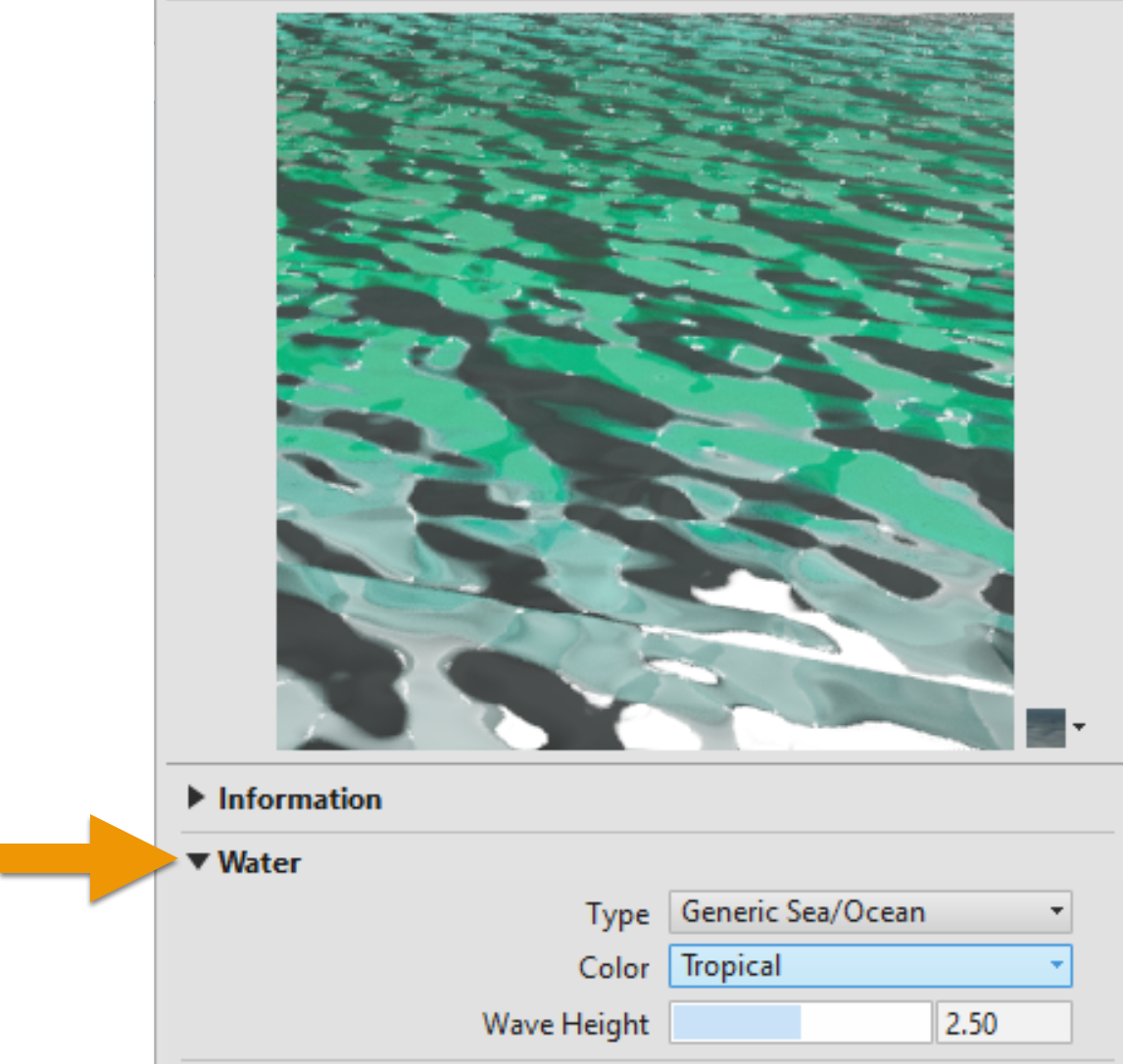
Water with tropical color
Various combinations of these settings will produce unique results. In the image below are four examples, featuring from left to right: Swimming Pool, Stream/River + Murky/Brown, Lake/Pond, and Sea/Ocean + Tropical. Combine the water settings to match the real-world condition you wish to depict. For example, an ocean-front property would naturally have the Sea/Ocean water type selected. However, the designer could choose any setting they want for dramatic effect when appropriate.
It is interesting to note that even though the Wave Height setting is the same for each of the images below, except the first one, the reflections are all different. Whenever Enscape renders water on the screen, it randomizes the water’s surface, resulting in a natural look.

Compare Water Types, from left to right: Pool, Murky River, Lake and Tropical Ocean
Lake and Tropical Ocean
When working within Revit, the water material is a physically-based material with water-specific settings, as described above. Additionally, all Revit materials have an overriding Tint option. The Tint setting can be used to make water look as if a colored dye has been added; think the Chicago River on St. Patrick’s Day in the USA. The RGB color can manually specify the additional absorption by particles or dirt in the water, where white equals clear water with it’s natural, slightly blue absorption properties.

Tint Water Color | Red Tint Applied to Water Material
The following image shows how the wave height, or its turbulence, can be controlled. Here we have the two extremes, one near zero, and another at 50%: 0.0, 0.50, 2.5 and 5.0. It is possible to have multiple wave heights within the same project by creating additional materials. This way it is possible to represent a glass of still water on the dining room and then a more active adjacent body of water, such as a river or lake, in the same project.

Compare Turbulence Values: 0.0, 0.5, 2.5 and 5.0
School Pool Example
Seeing the results in the context of real-world projects is perhaps the most compelling way to appreciate water in architectural design. The following video is a high school swimming pool. The water is set to a low wave height of 0.5, to give it just enough turbulence to liven up the water’s surface with light and reflections. The video also depicts the natural movement of the water when navigating a model on screen or as recorded in the MP4 video.
Before moving on, make a note of the lighting on the water’s surface as well as the increased transparency for deeper water. Also, most of the materials in this model have been updated with Revit 2019’s new advanced materials. Also, keep an eye out for the reflections that appear on the narrow multi-colored floor tiles in the video.
Natural Example
Combine Enscape’s realistic water and grass features to achieve dramatic scenes in non-architectural works. The following model is 100% Revit and Enscape without any post production. This project was created in just a few hours, as an example of a park restoration project planned together with a landscape architect. The four images below are the same, except with various wave height values applied. This image uses RPC’s , Megascan content, SketchUp’s 3D Warehouse content and one of Enscape’s built-in skyboxes . Also, the sun rays are emphasized by an increased fog setting from the Enscape Settings menu. As you can see, the results are simply astounding:
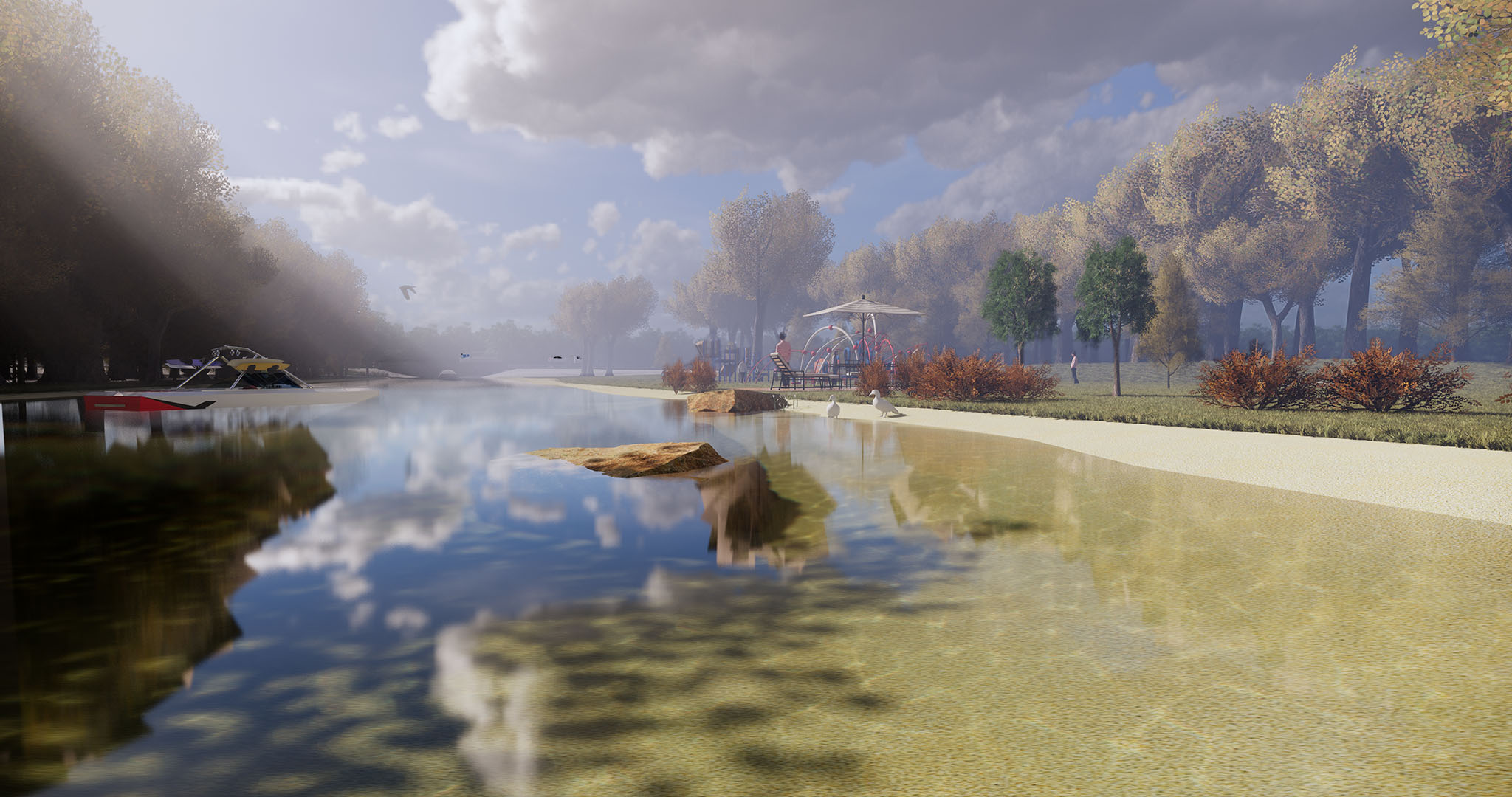
Wave Height Setting: 0.0
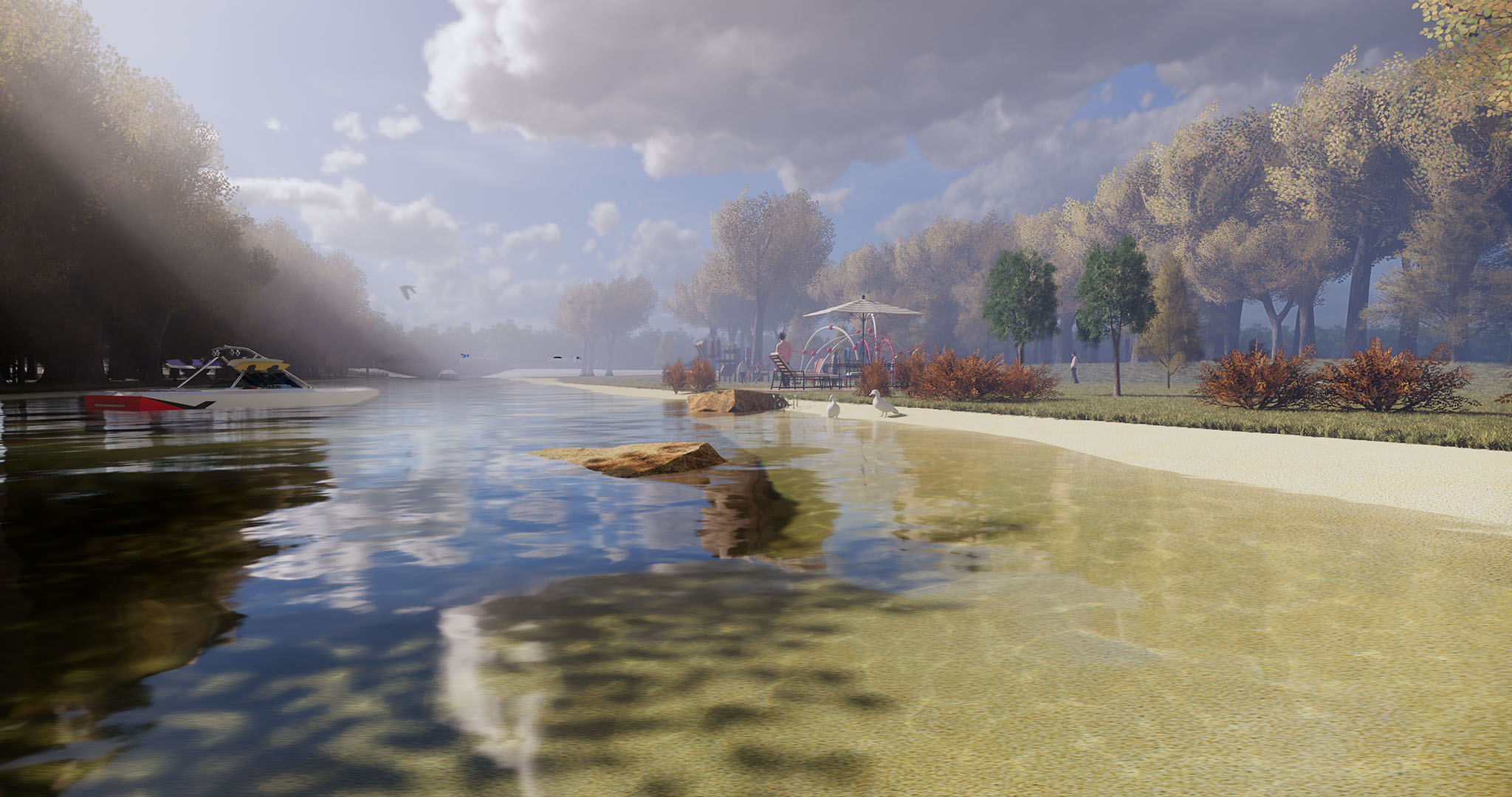
Wave Height Setting: 0.5
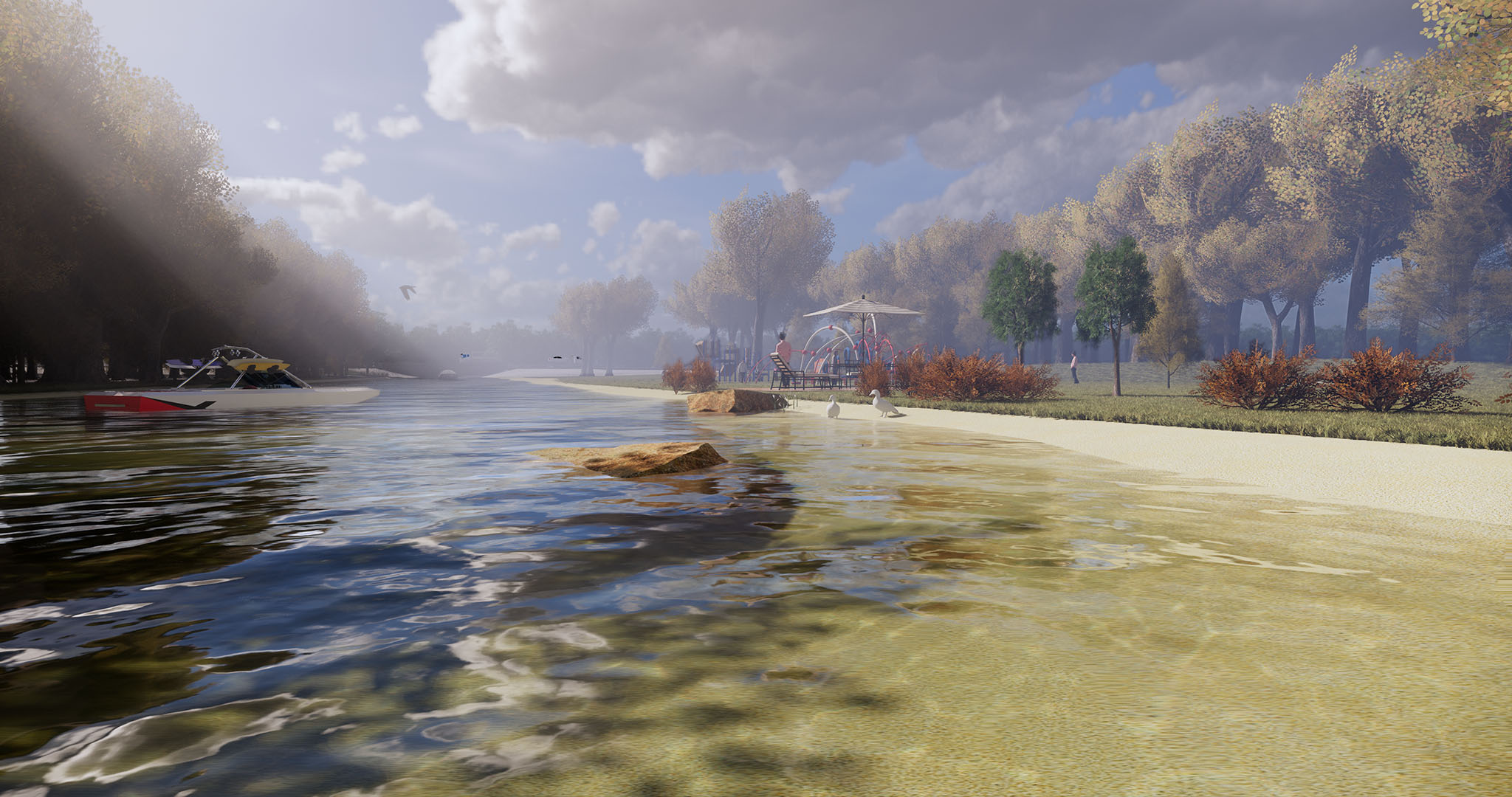
Wave Height Setting: 2.5
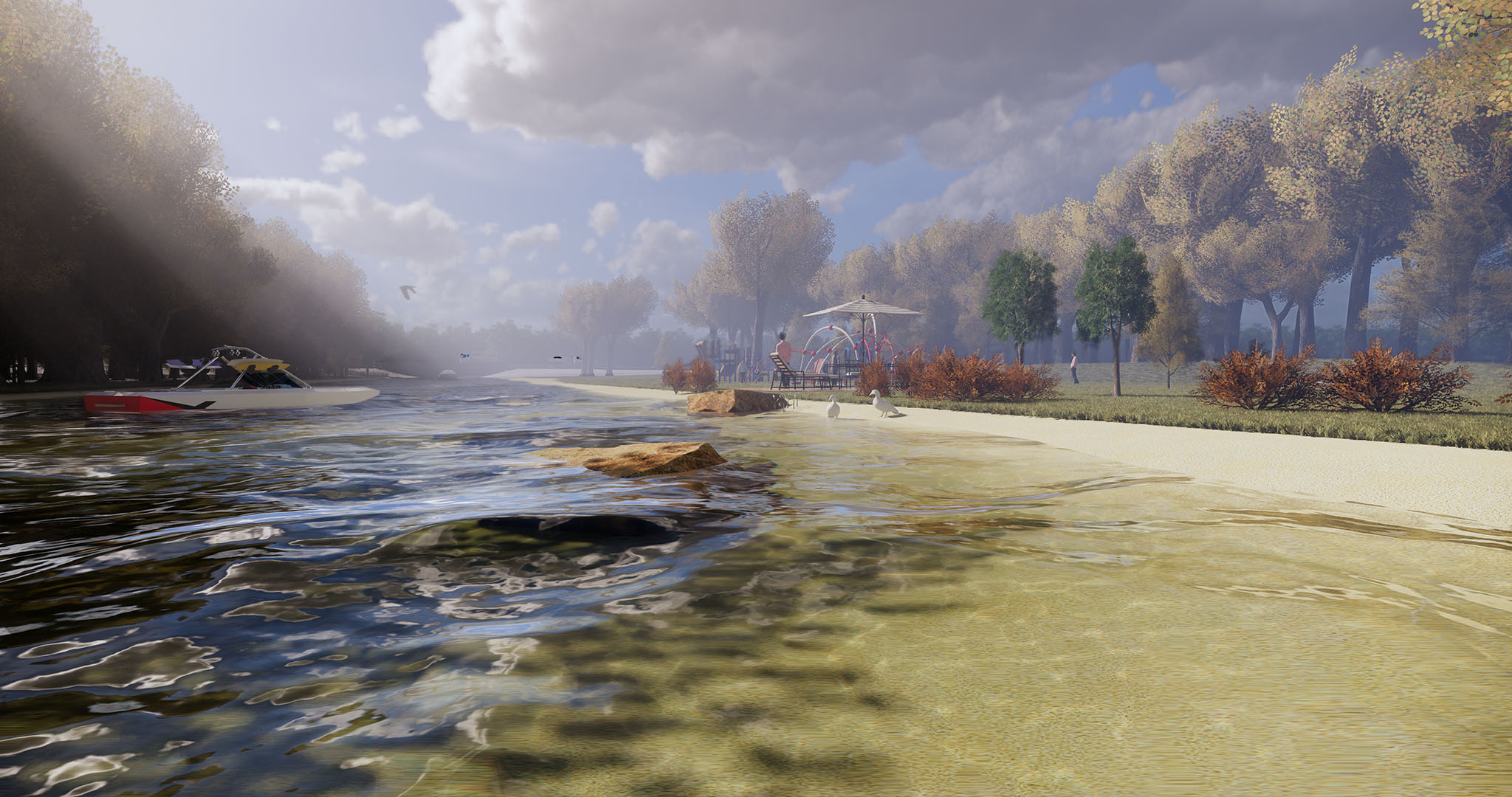
Wave Height Setting: 5.0
SketchUp Example
SketchUp Example
When working in SketchUp, the Enscape Materials dialog also supports various controls used to represent water similar to the examples already shown. This sample project, used to create the image below, was created using various downloaded components from 3D Warehouse followed by making a few adjustments to those materials.

Water Material Settings in SketchUp | Nice Scene with Water Elements in SketchUp
Conclusion
Water is an amazing element in architectural design. With the right combination of water type, color, wave height and turbulence, you can not only create more realistic renderings but also control the mood of your scenes much more effectively.
With surprisingly little effort, and even less time to process (think real-time,) a Revit, SketchUp, Rhino, or ArchiCAD model can truly come alive with water elements, even in a still image. Oh, and wait until you see this water in VR – simply amazing!

Dan Stine
He is an Author, Blogger, Educator,
BIM Administrator and Wisconsin registered architect.
He works full-time at LHB – a 250 person full-service design firm.
He is an Author, Blogger, Educator,
BIM Administrator and Wisconsin registered architect.
He works full-time at LHB – a 250 person full-service design firm.
LinkedIn – https://www.linkedin.com/in/danstinemn